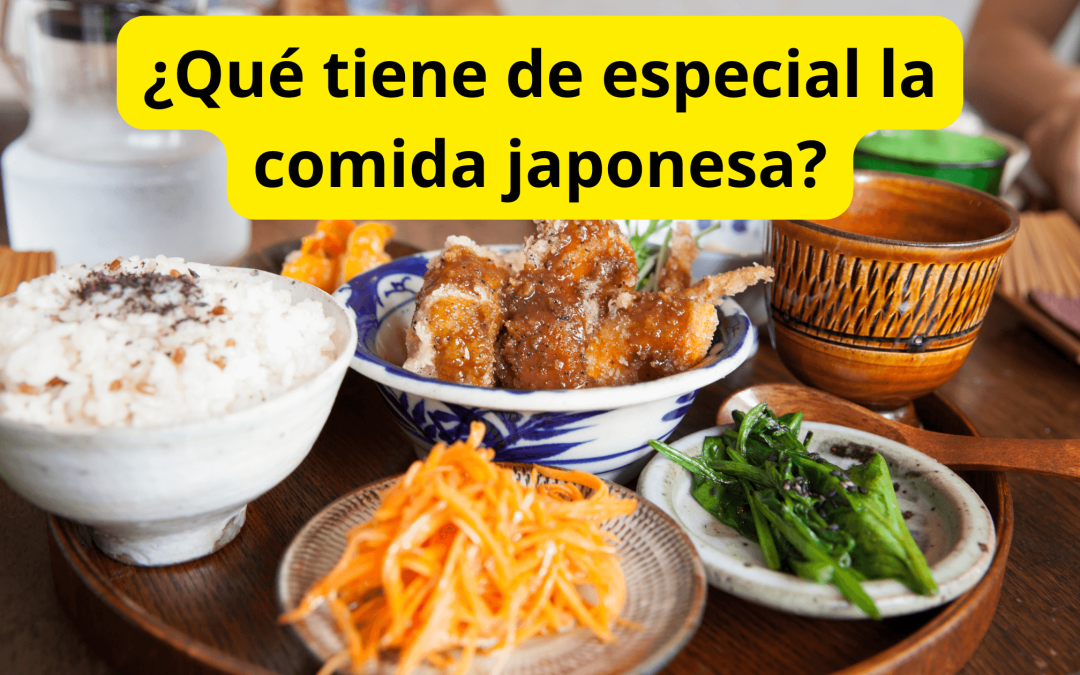What's Special in Japanese Food: Here are some secrets of Japan and a list of 10 very popular Japanese foods you should try
Today we decipher What is so special about Japanese food? and teverything that is related to it. We invite you to immerse yourself fully in the Japanese culinary world and thus get to know all the differences and peculiarities.
We’ll teach you how to differentiate between Chuuka, washoku and yoshoku. Have you ever heard the phrase “class B kitchen”? Here we tell you what it means.
Finally, we put together a list of 10 Japanese foods that you must try if you visit Japan.
The special thing about Japanese food and its characteristics
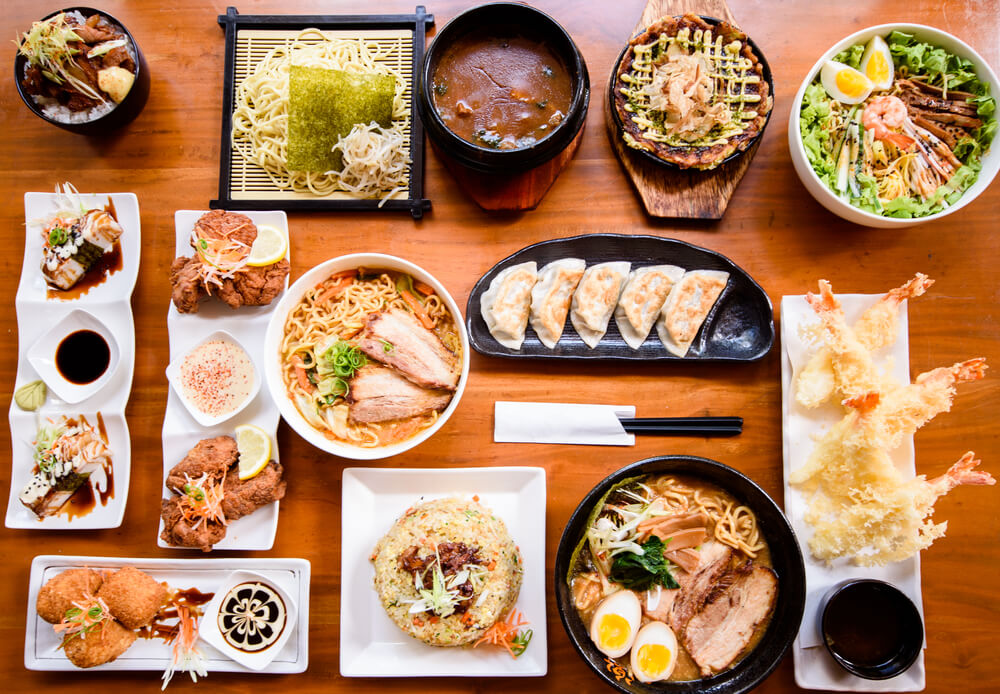
For every foreigner, food of Japanese origin has a reputation for being very balanced, healthy and extremely nutritious. In fact, many credit the longevity of the Japanese to the food they eat. Now we are going to tell you certain secrets about their diet.
Fermentation
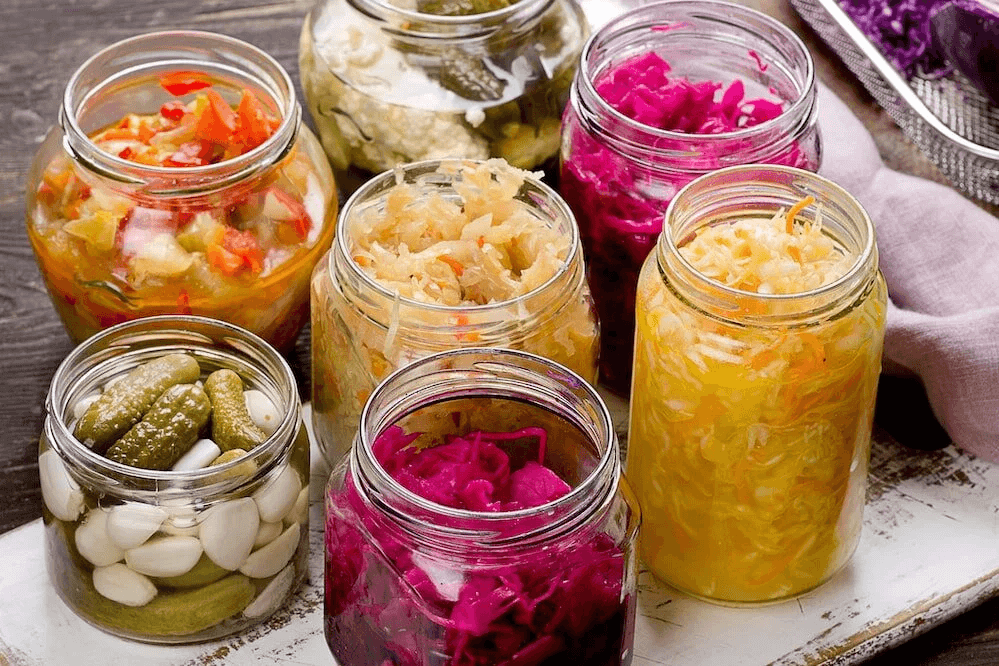
One of the main characteristics and what makes Japanese food special is that there is a large number of fermented products. What does this mean? That a food is or is fermented, means that it has gone through a process of decomposition by yeasts, bacteria or microorganisms that change its flavor, appearance and shelf life.
Living in Japan is possible!
We help you put together a plan for you to live in Japan
Which of these foods are fermented?
Some of the many are:
– Miso (which is a soybean paste)
– Soy sauce
– Bonito flakes
– Mirin (Similar to Sake but low in alcohol)
– Natto (soybeans-納豆)
– Shiokara (seafood – 塩辛)
– Tsukemono (pickles – 漬物)
– Sake (alcoholic beverage prepared from a fermentation made from rice)
The impact of climate and geography
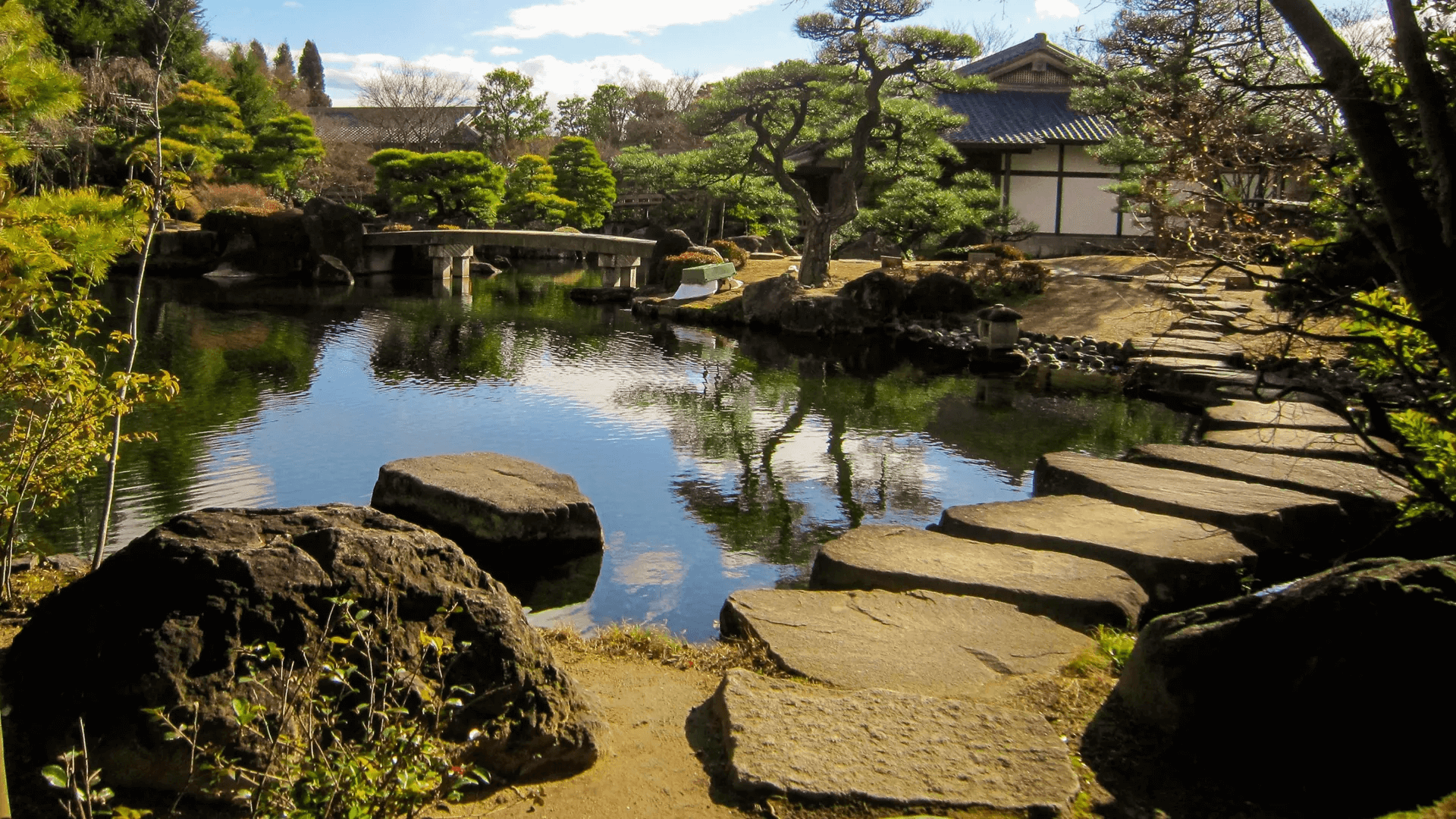
As we all know Japan is an island, its shape is elongated and narrow. It extends from the north to the south and this causes its climate, weather and culture (among other things) to be very different depending on the location we are talking about.
Being an island, they are surrounded by water and this makes fish and shellfish abundant, on the other hand, the surfaces that are surrounded by forests and mountains are full of vegetables, there are also fish, but they can only be caught in fresh water.
Of course, here is the text with the phrase introduced in a more natural way using synonyms:
Depending on the region in which you live, its inhabitants have discovered and perfected the best way to prepare their native products and do it in a delicious way for consumption, as well as to be able to preserve it for a long time.
But what makes Japanese food so special? Meibutsu – 名物, which means local delicacies or local specialties, which have been passed down from generation to generation until today.
Consideration, respect and appreciation for nature
An important point to make special about Japanese food is the value of the seasons, which gives rise to words such as kisetsu gentei – 季節限定, which means “limited season”.
Each season is very different, as evidenced by the cherry trees blooming in spring and the autumn leaves changing the whole panorama, but not only changes the visual but also the ingredients and thus the food.
It is called shun – 旬, which means “season in relation to food”, at the time when an ingredient is going to be harvested or caught in seafood boxes. It is very common for you to see this kanji in sushi restaurants.
All foods considered “seasonal”, also called 旬, have the characteristic of having a high yield, a great nutritional value and are commonly called “high season” and best time. In fact, they say that it is very positive to eat any food that is in its “high season”, as it has a very positive effect on our body.
Japanese culture is too respectful and this is not far behind when we talk about nature. It goes without saying that they are extremely respectful of it to the point of appreciating it and perhaps even adoring it, thus reaching Shintoism. There is a strong belief that, in nature, God rests, so we can find different gods in it. Such as the gods of the mountain and the sea. For this reason, many events are held where prayers are offered to the deities to achieve a prosperous harvest and good catches.
The Foreigner and Japan; Japanese culinary art applied to foods from other countries
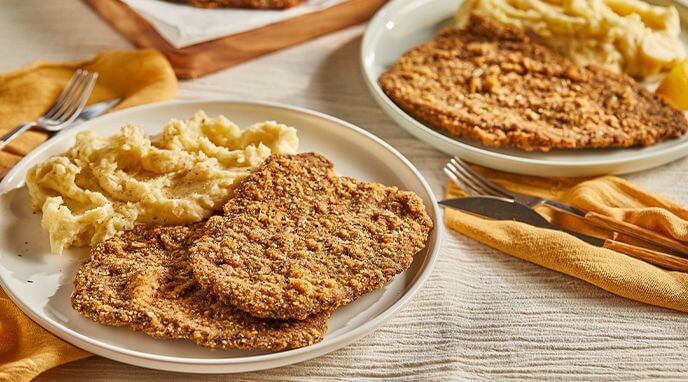
The Japanese have taken many recipes from abroad and adapted them to their own tastes, as well as modified to be updated according to the availability of the ingredients.
The traditional Japanese food called Washoe is made up of steamed rice, a miso soup, some slow-cooked dishes and also grilled foods.
Other foods that are very popular today in Japan, such as ramen, croquettes and curry rice, are not native to this country, but have been adopted from abroad and were modified for the popular Japanese taste. Japan’s adaptability to assimilate other cultures into its dishes makes Japanese food so special.
Example of different Japanese foods
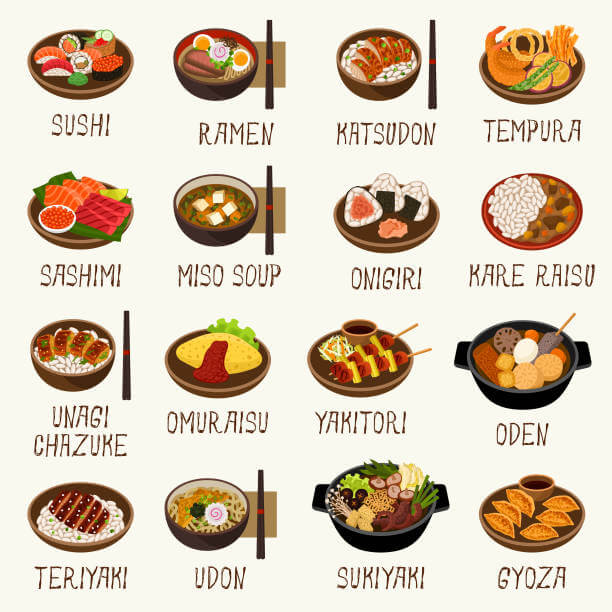
The term “Japanese food” is extremely broad and does not accurately convey the extensive number of dishes and each of their distinctive flavors and textures.
Probably the first thing you think of when you imagine Japanese food are very typical dishes such as suhi or ramen, but in reality, these two are categories that are separate from Japanese food, here the terms Washoku, Yoshoku and Chuuka come into play.
– Washoku 和食: According to the dictionary the literal translation is “Japanese cuisine, Japanese food or Japanese dish”, but it is actually a reference to traditional Japanese food. In 2013, UNESCO recognized Washoku as an intangible cultural heritage of humanity for its history and cultural significance.
Examples: Sushi, sashimi, kaiseki, ryori, tempura, udon, soba, among others.
Several dishes called washoku are related to different celebrations such as ozoni on New Year’s Eve, chirashizushi for hinamatsuri and tsukimi dango for the festival held in mid-autumn.
– Yoshoku – 洋食: This is considered fusion cuisine. It is a Western but Japanese food. They are dishes that have been inspired by foreign foods (Western and European) through modifications. In fact, many of these dishes still retain their foreign names written in katakana.
Examples: Japanese curry (British origin), croquettes (French origin), castella (Portuguese origin), steak (American origin) and more.
Some other Toshoku dishes are strictly Japanese creations such as Neapolitan pasta (pasta with ketchup), omurice (rice with omelette), and doria (rice-based gratin).
– Chuuka – 中華 We should not be confused, chuuka is Japanese Chinese food, that is, it falls into the category of “fusion cuisine”. Chuuka dishes are similar to Chinese blueprints, but have been changed as yoshoku to suit Japanese tastes and customs. There are , however, some chuuka recipes that are only available in Japan.
Chuuka examples: Gyoza, harumaki (fried spring rolls), nikuman (steamed meat buns), chahan (fried rice), shumai (dim sum type) and others.
Original Chuuka examples from Japan: Ramen, (chuuka soba), karaage, hiyashi chuka (cold noodles), and champon.
Class B Kitchen and Class A Kitchen
The first, B 級グルメB kyuu gurume, means B-class cuisine, this definition is reserved for the type of food that is inexpensive but delicious, which does not represent the upper class, but is very rich and tasty.
These types of foods are only available in very specific places in Japan, they are a local delicacy. They can usually be found in small areas, such as some towns, or small towns and countryside. Some examples of this type of food are: mapo tofu, yakisoba (sendai, Miyagi prefecture), nira soba (kanuma, Aichi prefecture), kushikatsu (Osaka), takoban (kagawa prefecture).
The second, A 級グルメ was first minted in 2010 in Niigata, and was part of a project called 雪国A級グルメ yukiguni A kyuu gurume, “Class A cuisine of the snowy country” which aims to promote local cuisine made with local ingredients and traditional cooking methods.
This type of cuisine is a higher class meal if we compare it to the first mentioned. They share a single characteristic, that of being local delicacies that we can only find in certain places, since, unlike the first, class A cuisine is very expensive and uses high quality ingredients. The places that offer this type of cuisine are dedicated to luxury. They are establishments that offer experiences of another economic level.
Although this term is used less frequently than the term B-class cuisine, it has served as inspiration for the creation of new similar projects in other prefectures.
10 Popular Foods You Must Try in Japan
1- Yakitori:

Pieces of chicken cooked on the grill on a charcoal fire. We can choose which part of the chicken we want to eat, whether the breast, the thigh, liver, the skin, etc. They usually offer us two options on how to prepare the chicken, it can be salted or in sauce ( たれ tara). In these places they also offer vegetable skewers and others such as shiitake mushrooms, green peppers and mochi cheese.
2- Donburi 丼
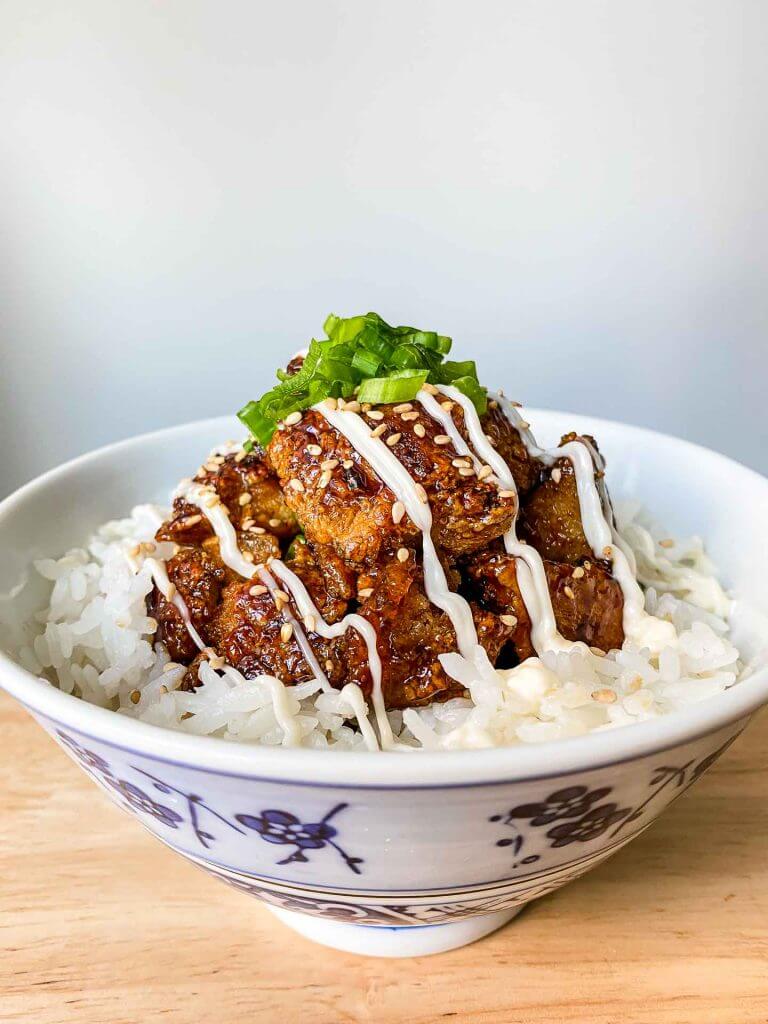
It’s a bowl of steamed rice with topping. There are many varieties of this dish since the topping can be practically anything, fish, meat, vegetables etc. The list of the most popular ones includes: gyuudon (beef), oyakodon (chicken and egg), kaisendon (seafood), tendon (tempura), katsudon (fried pork chop). There are also regional donburi, which are prepared with local products, such as Sendai zukedon (pickled fish), Enoshima shirasudon (bait), Ehime class B cooking buhidon (charcoal-grilled pork loin steak), and others.
3- Tempura 天ぷら

This dish is made up of different pieces battered with dough and fried that form a crispy layer. They can be served in a bowl of rice (tendon), as an accompaniment to noodles (udon and soba), as a main dish (teishoku), or as a side dish. It is usually accompanied by a sauce to moisten them called tentsuyu composed of dashi, soy sauce, mirin and sugar.
The most popular tempura are made of: prawns, eggplant, squid and pumpkin slices. Other ingredients depend on the time of year, such as sweet potato in autumn or rapeseed flowers in spring.
Japanese for your trip!
Communicate with native speakers in less than 3 months with our language courses.
4- Takoyaki たこ焼き
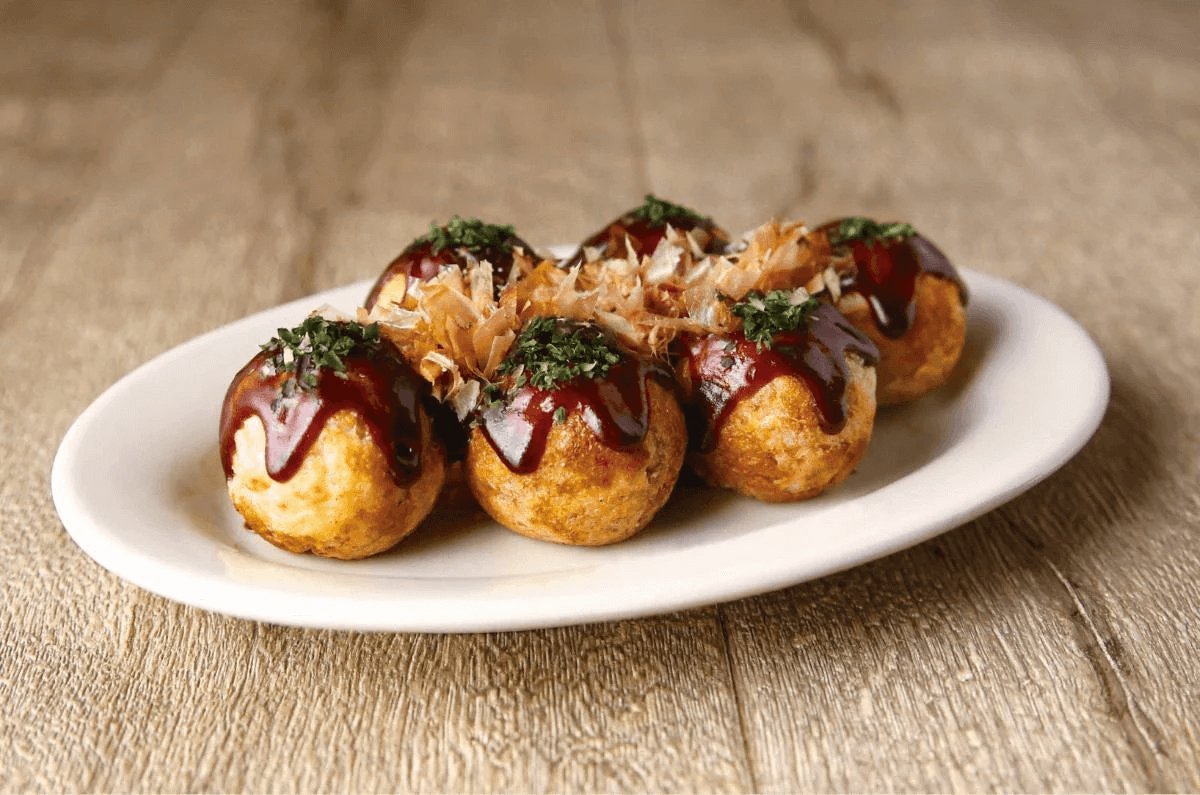
This dish that represents Osaka, is an octopus sandwich covered with flour dough and shaped like a ball. It is common to sell them in a “can” of between 8 and 10 balls.
What characterizes them are the different toppings. There are some classics such as takoyaki sauce, mayonnaise, bonito flakes and anori flakes.
These octopus balls are cooked in a special pan with many hemispherical molds to mold the mixture while cooking. There is a takoyaki festival in Japan called Takopa タコパ where you can make them yourself.
5- Okonomiyaki お好み焼き
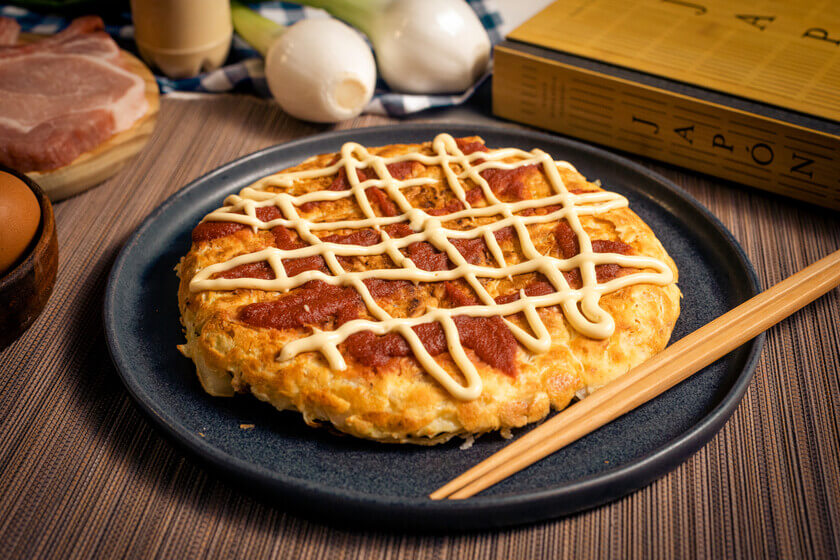
Representative dish of Osaka. A flour dough mixed with cabbage and other ingredients is prepared and fried in a very hot pan on both sides. It is then filled with similar ingredients such as takooyaki: okomiyaki sauce, mayonnaise, bonito leaves and aonori flakes. This is how Osaka style okomiyaki is prepared, which is even known outside Japan.
Another version is the Okonomiyaki Hiroshima, characterized by noodles and a fried egg topping, and is cooked in a capable.
Another variation of Tokyo and originating from Twukishima is Monjayaki.
6- Nabemono 鍋物
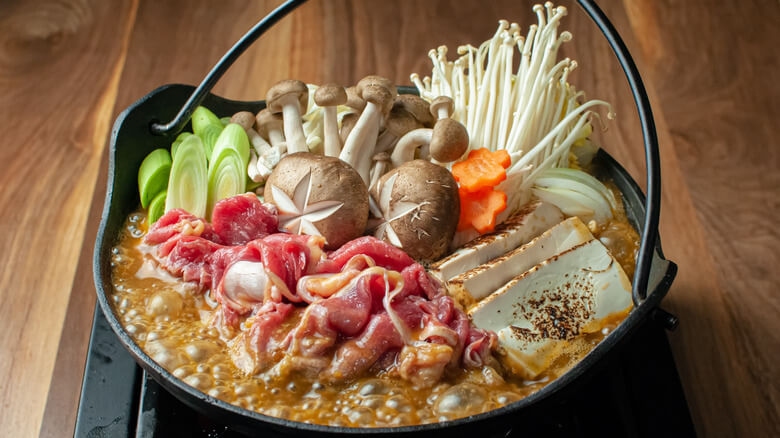
These are foods prepared in hot pots called nabe.
Some classic foods prepared in nabe are:
– Sukiyaki: Meat and vegetable stew prepared in a shallow pot. Their soup is made with soka sauce, mini, sake, sugar, and water. Sometimes todu, negi (Japanese spring onion), hakusai (Chinese cabbage) and mushrooms (shiitake and enoki) are also included. One of its special features is the raw egg for dipping cooked meat.
– Shabu: Stew with a lighter flavor than sukiyaki, it is sweeter. It is eaten using chopsticks to dip meat and seafood in boiling water or broth until cooked. Then they are dipped in sauce and eaten. The ingredients that take longer to cook are cooked separately in a pot. The remainder of soup is used to cook noodles or porridge to finish the meal.
– Motsunabe: Stew of pork and/or beef offal called ホルモン horumon. The broth in the soup, which is usually miso-based, also includes chives and garlic to cover the smell of the animals’ viscera.
7- Yakiniku 焼肉
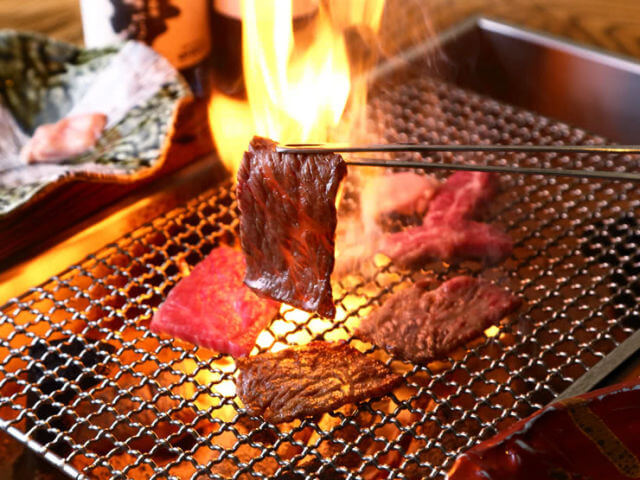
We recommend this meal for all meat lovers since, in the restaurants of this type of food, thin slices of meat are used, which are offered raw for customers to cook on an open grill on the table. Some variations can place electric plates.
Yakiniku uses cuts such as: tongue, harami (skirt steak), karubi, horumon (offal). However, the high-end yakiniku will have wagyu beef such as Kobe beef and matsuzuka beef, which are very popular for their sweetness.
8- Onigiri おにぎり
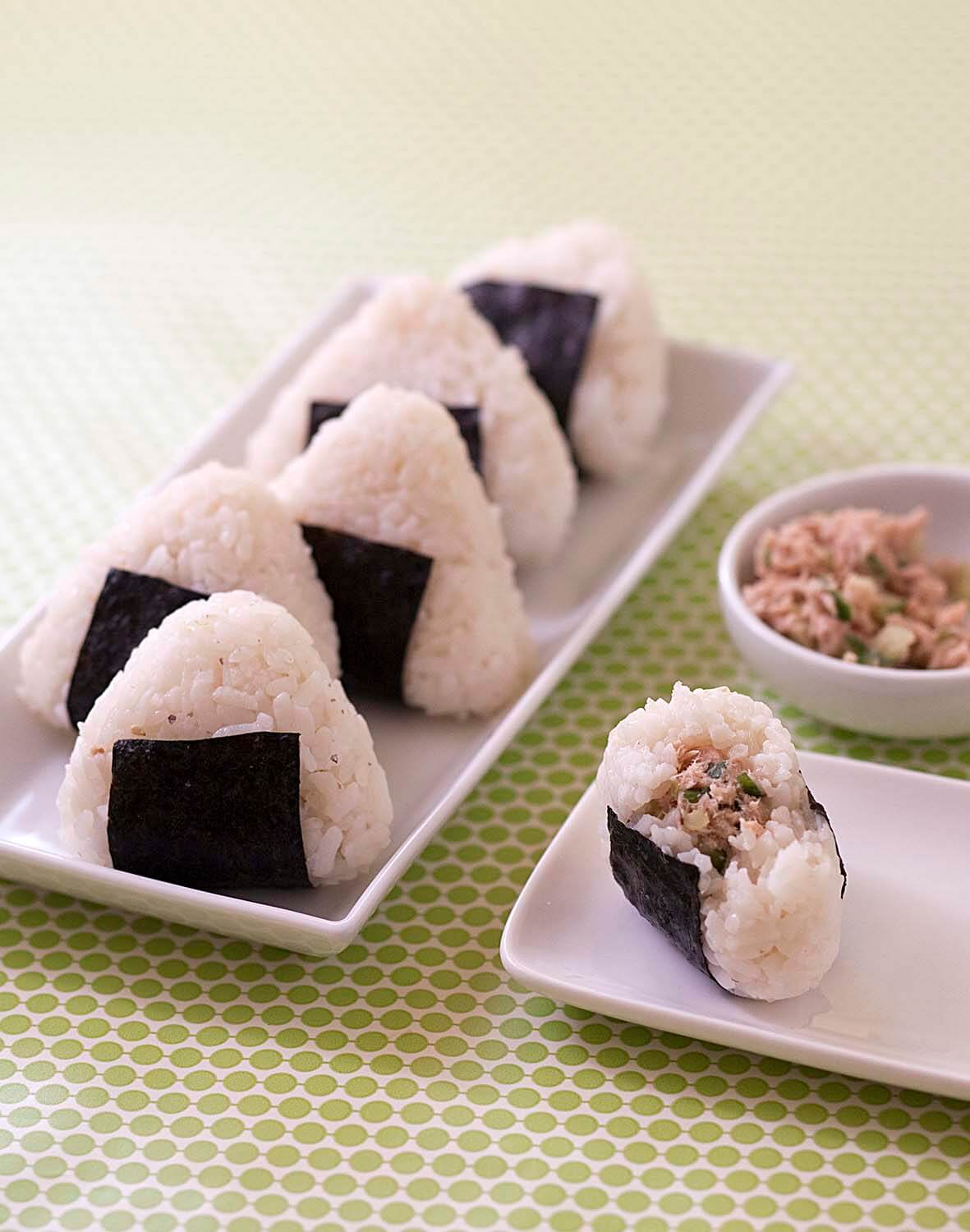
They are rice balls, also known as omusubi おむすび.
They are easy to make and easy to eat. They are prepared with simple elements, cooked rice, a sheet of seaweed and different fillings. Some onigiris are just rice balls with or without seaweed that work as an accompaniment to bento.
Cooked white rice is given a triangular shape . Inside, the most classic fillings are: tuna mayonnaise, cooked salmon, umeboshi (pickled plum), cooked meat and mentaiko.
9- Grilled squid ikayaki イカ焼き
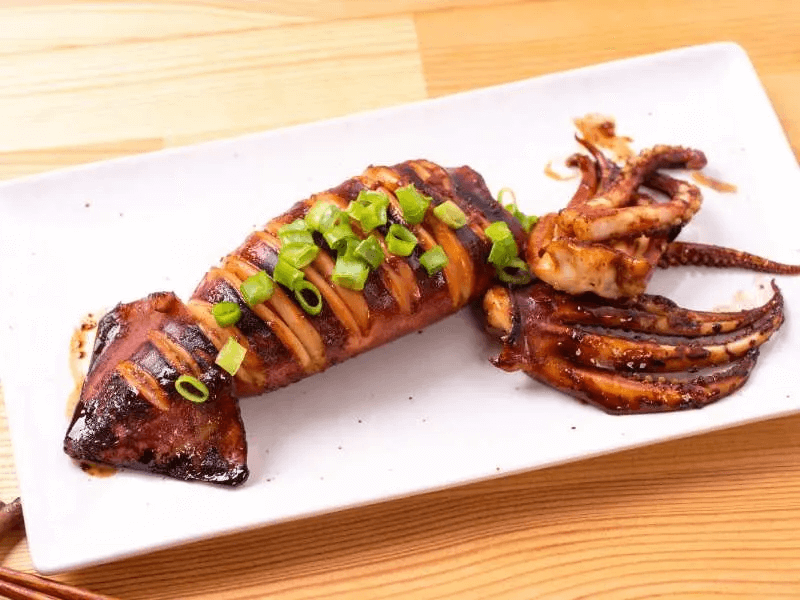
A very simple but decidedly delicious dish . They are great bites to accompany a cold beer and are usually served at izakayas or festivals.
It is prepared grilled and then cut into rings. In izakayas they are usually served on plates, but at festivals they are served skewered on sticks. They are accompanied only with a sauce.
10- Yakisoba 焼きそば
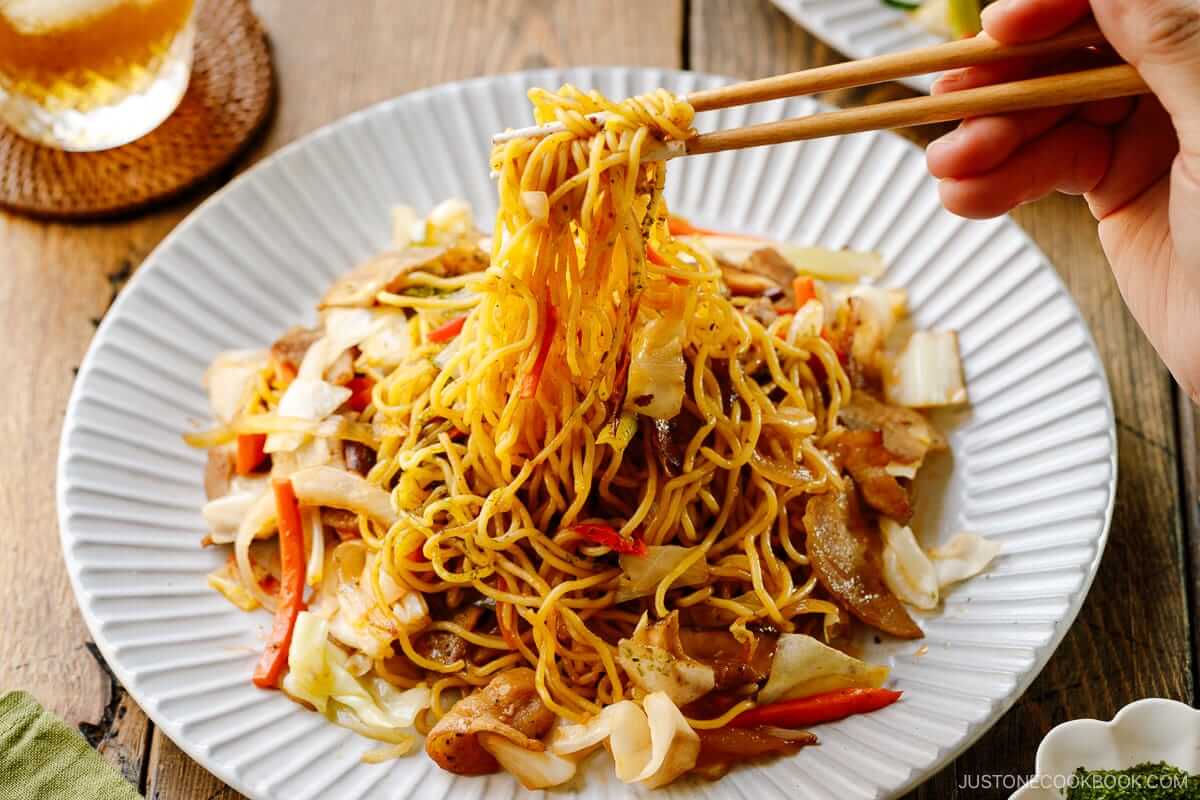
It uses a type of noodle called 中華そば chuuka soba, which are Chinese noodles.
There are two ways to prepare this dish, savory or with yakisoba sauce.
The first is drier, you can notice the sweetness of each element and the second is more humid exploding with flavors with the sauce.
This is a dish that is cooked with vegetables, usually sliced cabbage and carrots and also with meat which can be seafood, pork, or both. To finish it can be topped with a fried egg, seaweed flakes, red ginger, mayonnaise and bonito flakes.
If we serve it on bread, it is called yakisoba-pan. It can be found in school cafeterias and convenience stores in Japan.
Now you know why Japanese food is so special and varied, don’t forget to try these 10 dishes when you visit this wonderful country. Cheer up!
Co-founder and CEO of Doki Doki Japan. After studying Japanese in Japan between 2017 and 2019, he founded this school with the aim of offering accessible and authentic education to students who want to learn Japanese.

